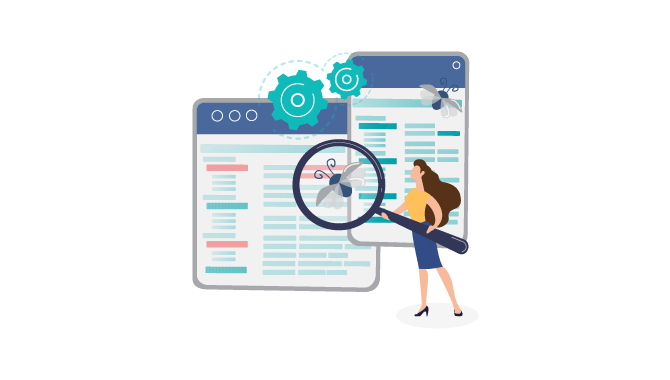19-02-2021
Five lessons that a problem-solving mindset taught me when testing
By Sara Moleirinho, Service Lead @ Xpand IT
Think of a product. What do you want as a consumer? Quality is the main thing that pops in your head? Ok, that’s what a tester does or a QA (quality assurance).
We assure the quality of your product. Is it 100% problem-free? Probably not. But our main goal is to ensure that your product will not have major issues when you use it.
In this line of work, it helps a lot to have a problem-solving mindset, since many times we are the “eyes” of the customer, and we aim to give the user the best and most practical experience to help our developers to find solutions to “bumps in the road” that we find.
I have a science background in research, so doing the change from a lab to an IT development team was not that big of a jump. I changed studying a live matter to a virtual matter, but both look for problems and the many solutions to solve them.
I am a natural problem-solver, and with that in mind, these are the five lessons that a problem-solving mindset taught me when testing.
1 — Organize your work
Find your way but keep a record of what problems you did encounter on the project’s different phases: is it solved or not? Are the developers looking into it? What’s the level of importance? That will help you and the team to have everything on point and under control, which is very important when reporting to the client.
2 — Do not assume anything about a product
When testing, one must not assume that “this” is the behaviour that should be seen. Assumptions can lead to two problems:
- Wasting time on a problem that really is not there;
- Not seeing the problem that is actually there.
For instance, because we all are app users, we often are misled into thinking that what we see in the product that is being tested is the expected behaviour. It can be how a screen appears or the shape of a button; we are too vitiated on our own user experience. And that leads to the next point.
3 — Ask questions
When you ask questions, you can learn everything about the project. Look for the people that can help you understand the product and create a bridge with the client that allows you to do that. This will help you to identify problems more easily and suggest more adequate solutions.
4 — Teamwork is everything
When we talk about testing, in a way, we talk about telling a team member that his work isn’t so good, we actually act as the filter that helps you have a well-done coffee. Learn how to communicate with your team members and set quality as a common goal. Also, we must have in mind that development is hard work and line after line of coding can lead to “blindness”, we must be humble enough to learn from our team members and do not expect a perfect app at first.
5 — Learn when to stop
As a tester, we often spend a lot of time looking into the same feature or into the same app, which can cloud our ability to evaluate and find problems, so it’s essential to know when to do a break on testing. Go for a short walk, grab some coffee or tea, drink some water, and once your back, you’ll have a fresh eye and a clearer mind. It’s common knowledge that every time you are wrapped around in an issue, and it seems that you can’t solve it, a good stop can do a lot to help.
A tester must use all the five points together, and it might work if a tester is well organized, but he must rely on his team to understand the client. An inquisitive mind will lead a tester to ask the necessary questions.
Conclusion
The bigger challenge of a tester in keeping a clearer mind through all the process it’s not to get overwhelmed. It’s also important to keep a record on every test, and the evidence is the biggest ally of a tester if a “bug” is found having a screenshot or even a filmed record can help the team to understand better why it’s happening, the same for “Happy paths” or major functions after new deploys. It ensures the team and the client that everything is working as it should before a new release.
In the end, if you are a thorough person and a perfectionist, you have half of the work done. As said in the beginning, quality is the most important thing about a product, and the only way to achieve it is to involve all the parts.
Quality is a puzzle made of clients vision, design realization, development and testing.

























